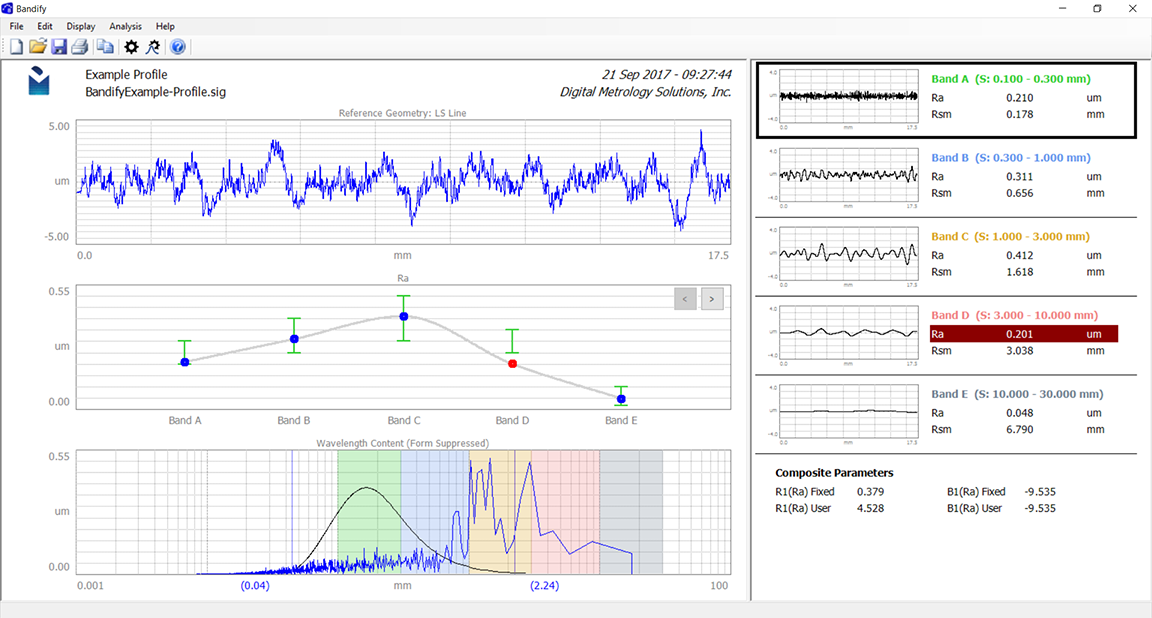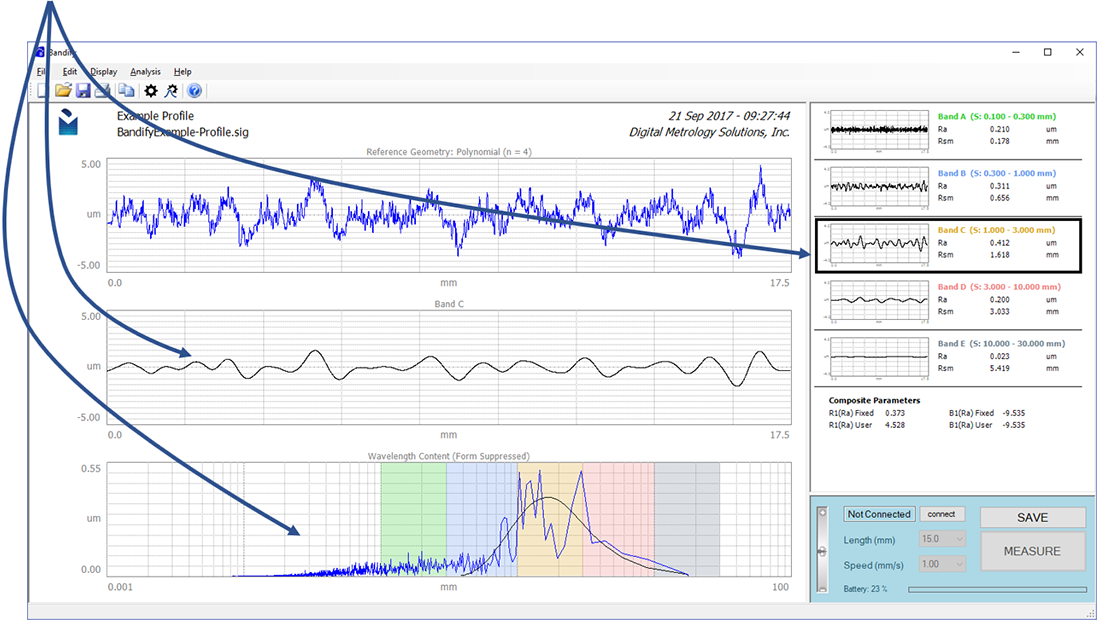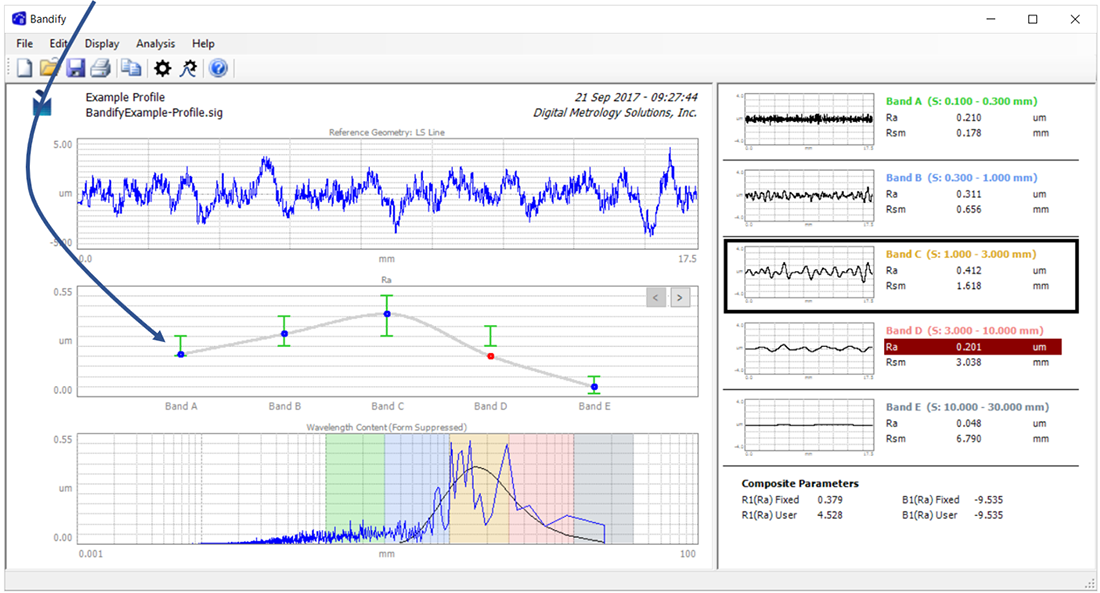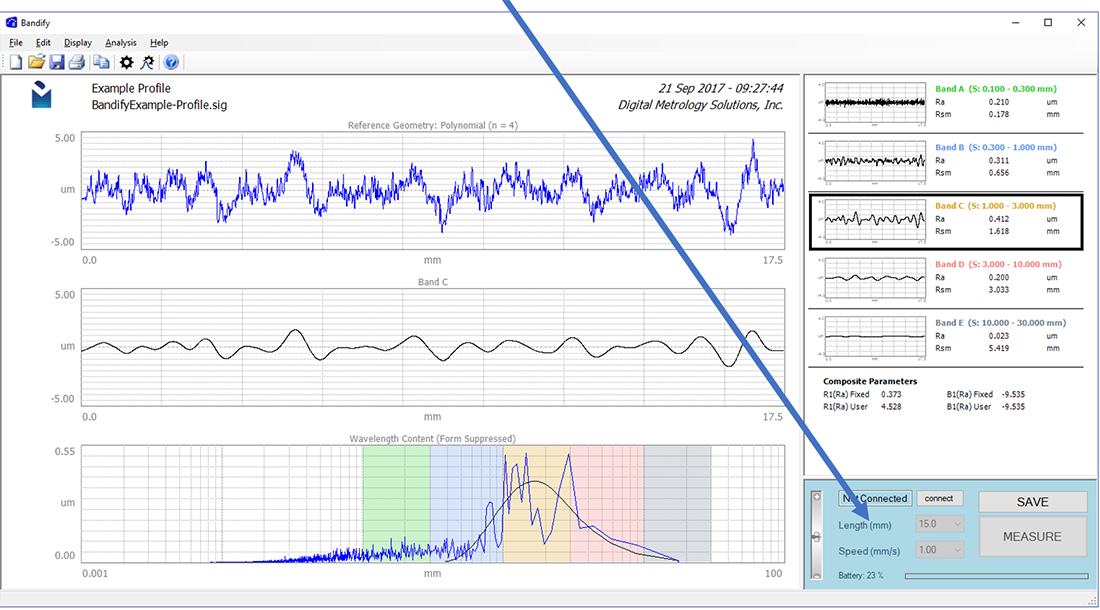Bandify
Multi-band Surface Texture Analysis
What makes your eyes recognize a “luxury car finish”? What makes a brushed nickel finish look correctly “brushed”?
These questions, and many other questions like them, often boil down to the most important question:
How do you control your processes to make surface finishes that satisfy the eye and perform admirably through years of use?

No surprise: it’s in the surface texture.
Specifically, it’s in the mix of spatial wavelengths that make up the texture. Surfaces dominated by short-wavelength texture tend to appear glossy, or perhaps even “fuzzy.” Longer-wavelength form may give the surface an appearance of haze or orange peel. Some texture is required for film-to-film adhesion, but too much will lead to poor appearance later.
For every application, the correct combination of spatial wavelengths leads to a finish that not only looks great but also offers excellent adhesion, durability, etc.
Multi-band surface texture analysis: see the wavelengths that matter
We developed Bandify® as a fast, efficient tool for analyzing surface texture and its component wavelength bands. You immediately see the surface texture separated into the wavelength bands that matter for your application, all in a single, intuitive display.
Download a 10-day Trial of Bandify
The image below shows Bandify’s intuitive, all-in-one display. The top of the window shows the composite texture. On the right and at the bottom of the window, the texture is separated into five customizable wavelength bands.

Click on a specific band to view it in the profile graph, along with a representation of the wavelength domain for that band.

Display a “parameter summary” to better understand the relationships between the bands.

Tolerance bands make out-of-spec parameters immediately obvious. An example is the Average Roughness (Ra) value for Band D, shown in red below.

Bandify can even control your measuring instrument for “one click” measurement and analysis. Contact Digital Metrology for specific interfaces.

Download a 10-day Trial of Bandify
Explore and interact with data
Bandify lets you quantify, specify, measure and track multi-band texture.
But most important, Bandify lets you explore and interact with the data. Click and drag on plots to highlight aspects of the texture. Calculate and compare standard parameters such as Average Roughness, RMS Roughness, Spacings and Slopes.
The software helps you see the effects of the texture at every stage of your process so you can determine the wavelengths that matter for a perfect finish.
One wavelength band does not fit all
Because every application has unique requirements, Bandify’s wavelength bands are fully customizable. For each band you can configure the cutoff wavelengths, filtering methods, display parameters and pass/fail limits. The 2D version and 3D version use identical interfaces for setting up analysis conditions—no need for additional training.

What’s more, you can save all of the settings to create a measurement “recipe” for every type of part, at every stage processing. Bandify makes it exceptionally fast and easy to see and understand the effects of texture for every type of surface (bare metal, primer, paint, clear coat, etc.).
Simple and powerful texture analysis
Everything in Bandify is made to be fast and simple. Drag and drop existing data into either program to analyze in seconds. You can even batch process hundreds of files at a time. These features and many others make Bandify the perfect “common platform” for analyzing and exploring data from all of your measuring instruments.
Bandify provides remarkable tools that make complex multiband texture analysis easy to digest, and lightning fast.
Download a 10-day Trial of Bandify
Need multi-band analysis of 3D data? Check out the powerful features in Bandify3D!
System requirements
- Windows 10 or later (64-bit)
- 2 GB RAM or better
- 1080p graphics (at 100% zoom) recommended for optimal viewing experience.
